Why Trust Gadgetbyte?
At Gadgetbyte, we invest substantial hours into rigorously testing each product or service we review, guaranteeing that you make informed purchases. Learn more about our testing process.
Review Overview
Design & Build
8/10
Display
9/10
Keyboard
8/10
Trackpad
8/10
Performance
9/10
Audio
7/10
Webcam
7/10
Battery
8/10
Value for Money
9/10
Asus has hit a home run with the 2022 edition of the TUF F15 gaming laptop. Its powerful processors mixed with a competent cooling solution and a great display makes for a great gaming experience. Sure it's not perfect by any means, but if you're looking to buy a reliable 1080p gaming laptop with an exceptional value for money, the TUF F15 (2022) is a great choice.
With all the upgrades Intel and AMD have introduced with their latest CPU lineup, now’s a really great time to buy a gaming laptop. Naturally, Asus has also refreshed its gaming laptops with the newest processors. And among them, I’ve been testing the Asus TUF Gaming F15 (2022) for review for a couple of weeks now. Besides CPU, this guy also brings some notable upgrades in other departments like GPU and cooling system, which makes it a formidable mid-range gaming machine.
Asus TUF Gaming F15 (2022) Specifications:
- Design & Build: Plastic/metal hybrid build quality, 13.91W x 9.88D x 0.88H-inches, 2.2 kg
- Color Options: Jaeger Gray, Mecha Gray
- Display: 15.6″ anti-glare IPS panel, 300Hz refresh rate, 100% sRGB, Adaptive-Sync, MUX Switch, Optimus
- Resolution: FHD (1920×1080) resolution, 16:9 aspect ratio
- Keyboard: Full-size backlit keyboard (single-zone RGB), 1.7mm travel
- Trackpad: Multi-touch trackpad, Windows Precision drivers
- Security: TPM 2.0 chip, No fingerprint sensor
- Processor: Intel Core i7-12700H CPU (Alder Lake), 14C/20T, 4.7GHz Max Turbo Frequency, 24MB L3 Cache, Intel 7 process (10nm), 45W base power
- RAM: 16GB DDR5-4800MHz (2x 8GB), Up to 32GB (2x SO-DIMM slots total)
- Storage: 1TB M.2 PCIe 3.0 NVMe SSD (2x M.2 slots total), 1x 2.5" SATA slot
- Graphics: NVIDIA GeForce RTX 3060 (140W), 6GB GDDR6 VRAM
- Audio: 2x 2W speakers, Dolby Atmos audio
- Battery: 90 Watt-hours 4-cell Li-Ion battery
- Power Supply: 240W Smart AC power adapter
- Webcam: 720p HD camera, No physical shutter, Array microphones
- Connectivity: WiFi 802.11 6 (AX200), Bluetooth 5.2
- I/O Ports: 2x USB 3.2 Gen 1 Type-A, 1x USB 3.2 Gen 2 Type-C (DisplayPort, G-SYNC), 1x Thunderbolt 4 (DisplayPort), 1x HDMI 2.0b, 1x 3.5mm headphone jack, 1x RJ45 (LAN)
- Price in Nepal: Rs. 235,555 (i7-12700H, RTX 3060, 16GB RAM, 1TB SSD)
- What’s inside the box: Laptop, power adapter, quick start guide, TUF backpack, TUF Gaming M5 V2 mouse
Asus TUF Gaming F15 (2022) Review:
But before getting on with the review, let’s get familiar with the 2022 editions of the Asus TUF Gaming A15 and the TUF Dash F15 real quick. Here, the TUF F15 and A15 are pretty much the same, except that the F15 is powered by Intel’s 12th Gen CPU while the A15 brings AMD’s Ryzen 6000 series CPU inside.
On the contrary, the TUF Dash F15 goes with a somewhat cleaner design and a marginally slimmer build quality, all at the sacrifice of performance to some extent.
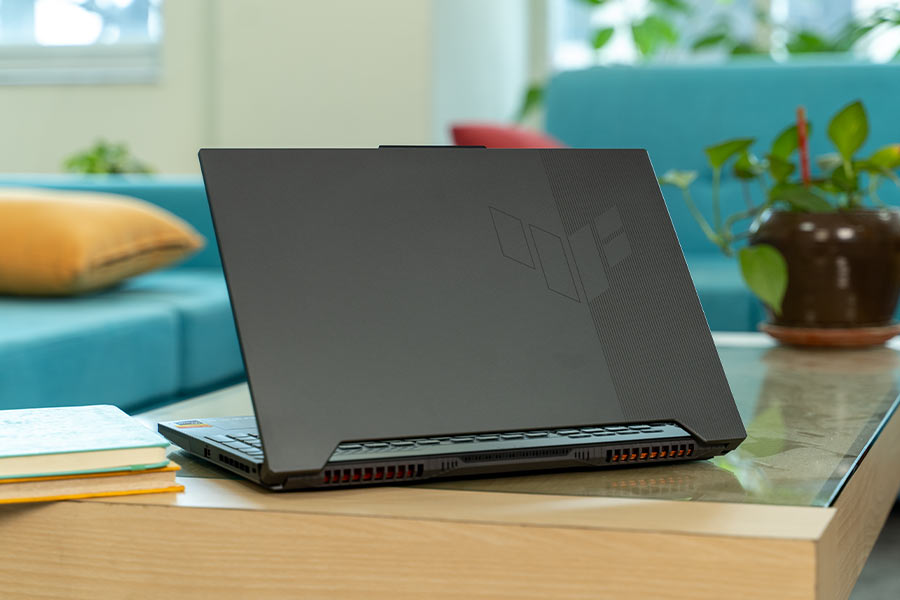
For instance, the TUF F15 can be configured with up to Intel Core i7-12700H and a 140W RTX 3070 whereas the TUF Dash F15 maxes out at i7-12650H and 105W RTX 3070. So yeah, Asus has laid out its lineup of gaming laptops pretty clearly this time. Do you want maximum performance at the slight expense of portability or not? It’s up to you.
In any case, our unit of the TUF F15 is powered by the i7-12700H CPU, 140W RTX 3060 GPU, 16GB DDR5 memory, and a terabyte of PCIe Gen 3 SSD. And both RAM and SSD are upgradable here, by the way. This configuration costs Rs. 235,555 here in Nepal, around Rs. 147,000 in India, or $1,500 in the US.
Performance
- Intel Core i7-12700H CPU (45W base power)
- NVIDIA RTX 3060 (140W, 6GB GDDR6 VRAM)
- 16GB DDR5 RAM, 1TB PCIe NVMe SSD
And for that price, this is easily one of the most powerful laptops you can get right now. The sheer performance jump that the 12th Gen processors bring is staggering! If you’re curious to learn more, we’ve discussed all about it in our full review of the Core i7-12700K desktop CPU. Anyway, pair that with the most jacked-up RTX 3060 mobile GPU available on the market, then the TUF F15 delivers quite impressive performance all around.
I mean, it absolutely annihilates the Core i7-11800H—be it in terms of single-core or multi-core workloads.
Just look at Cinebench R23. Its single and multi-core scores are the highest in our entire database! Similarly, this 12th Gen CPU posts a double-digit performance jump in other tests like 7Zip, V-Ray 5, and Corona, on top of productivity benchmarks like PugetBench and SPECWorkstation.
Review Images
1/7
Cinebench R23
Talking about productivity, I also tried editing a 1080p video project on Premiere Pro here, and it handled everything from adding animation and text layers to making color corrections with a breeze. Apart from the processor itself, that DDR5 memory should be working its magic too, right?
Don't expect much from the DDR5 memory
After all, it promises significantly higher bandwidth, power efficiency, and other upgrades over DDR4. But the thing is, the TUF F15 uses a CL40 DDR5-4800 memory in dual-channel.
The CAS latency could differ depending on the individual unit but I doubt that’s gonna happen anytime soon because DDR5 RAM with as fast CAS latency as the best-performing DDR4 memories simply isn’t available right now. So if you were expecting some sort of magical performance leap with the latest memory standard, sorry to say that’s not happening anytime soon.
Say hello to the MUX switch
Let’s now get to the gaming side of things. As with all Asus gaming laptops, you’ll need to turn on Turbo mode for the best gaming result here, which maxes out the CPU and GPU performance, alongside fan speed.
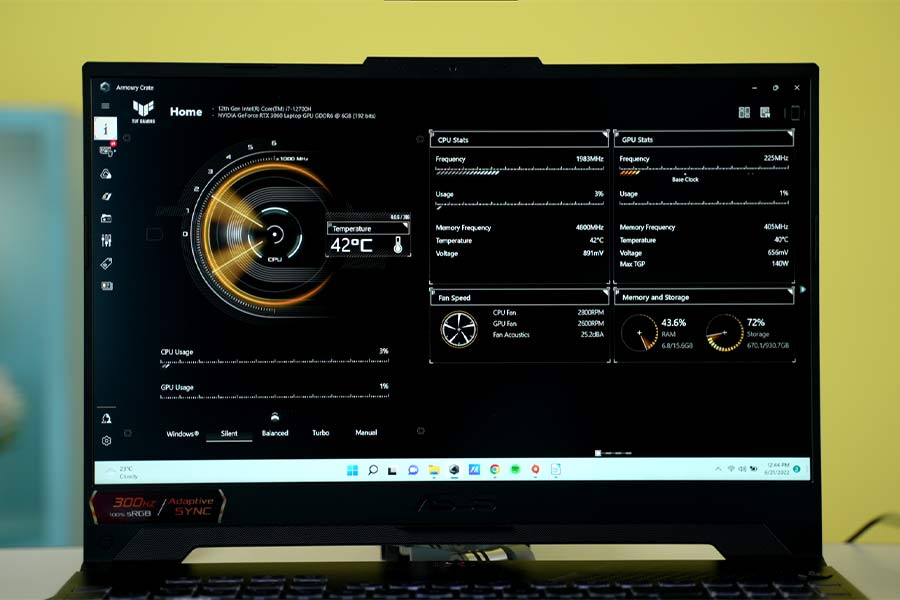
But the company has also added a MUX switch this time. In case you don’t know, a multiplexer (or MUX) switch basically lets you disable a CPU’s integrated graphics so that it doesn’t get to bottleneck the faster discrete GPU’s performance.
When enabled, the dGPU is directed connected to the display and it therefore doesn’t need to route data through the iGPU first.
And here, the option to turn it on is right there inside the Armoury Crate app which is pretty neat of Asus because the MUX switch is usually hidden inside BIOS in most cases. Mind you that enabling or disabling it requires a cold reboot.
With this, Asus says you can expect roughly 5 to 10% better performance on average. Now that might sound worth it to some, but in this case, I’m not that convinced mainly because of one reason.
The thing is, the TUF F15’s display isn’t G-SYNC compatible, although it does support VESA’s Adaptive-Sync technology. But since Adaptive-Sync doesn’t work when enabling the MUX switch, I noticed screen tearing on multiple instances when gaming on this laptop. You can connect a G-SYNC compatible display with one of the available USB-C ports, but that’s neither here nor there.
Excellent gaming results
Other than this, enabling the MUX switch also takes quite a toll on the battery life, but I guess gamers won’t be particularly bothered by that. Okay, let’s talk scores now. Compared to a similarly configured 11th Gen laptop with 130W RTX 3060, the TUF F15’s results are remarkable. Especially on CPU-reliant games like CS: GO, where its average and 1% low fps are more than 50% higher than the competition.
Review Images
1/5
CS: GO (Very High)
Similarly, both GTA V and Borderlands 3 deliver over 100 fps at High settings. On to some relatively GPU-intensive games, I got 66 fps on Hitman 3 at Ultra preset. And moving down to Medium settings didn’t improve the fps throughput by a lot here.
Review Images
1/7
Hitman 3 (Medium)
Control, on the other hand, managed 48.3 fps average at Ultra settings and High ray tracing, which jumps to 67.9 fps when switching to Medium preset. Cyberpunk 2077 is almost unplayable at Ultra settings with just 27.5 average fps. But at Medium settings, it delivers a respectable 46.8 fps. And with ray tracing turned off completely, the TUF F15 manages an impressive 104.5 fps average!
How about its cooling and fan noise?
All in all, this laptop can handle most modern AAA titles at medium to high settings with ease—absolutely no doubt about that. So what about cooling then? Such impressive gaming results can’t come at the expense of terrible thermal performance after all.
To make sure such powerful CPU and GPU perform consistently, Asus has significantly upgraded the cooling system this time. Unlike its predecessor, this guy has an additional exhaust vent on the left and an extra heatpipe underneath. And yeah, the TUF F15’s thermal performance is pretty impressive.
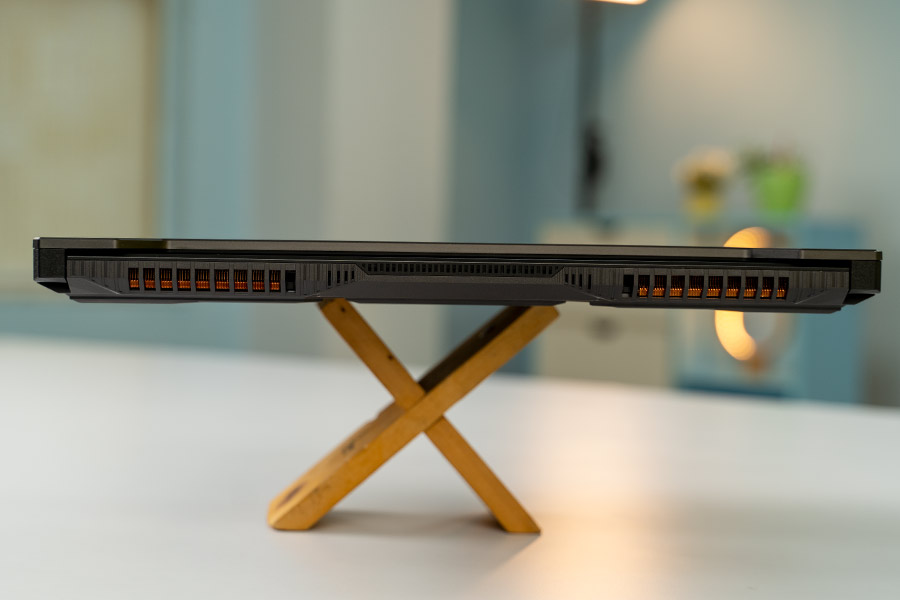
On the front, I noticed that the heat is mostly localized slightly left to the Enter key area, with the surface temperature reaching 43.4°C when playing some light games like CS: GO, or 48°C just above it. But that number would jump to 47.2 and 53.9°C under Cyberpunk 2077.
As for fan noise, I recorded its 47.8dBA at peak. This isn’t the quietest I’ve heard on a gaming laptop, but putting on a pair of headphones is all you need to drown it out. My only complaint, as far as its thermals go, is that the laptop gets a bit warm even when it’s idle. As opposed to Acer or MSI, Asus is pretty strict about its fan control mechanism.
Until the system senses that it's absolutely necessary to up the fan speed, it stays pretty much silent—even when you’re on Turbo mode. It’s pretty great if you’re using the laptop in a noise-sensitive environment like a college or office, but if you don’t care about fan noise, you can always crank it up under the Manual mode for cooler temperatures.
Design & Build
- 13.91W x 9.88D x 0.88H-inches, 2.2 kg
- Plastic/metal hybrid build quality
Performance aside, the TUF F15 is unapologetically a gaming laptop from its design as well. Although Asus has gone easy with that aggressive gamer aesthetics over the years, you can still tell that this is a gaming machine from its beefy build quality and other visual cues.
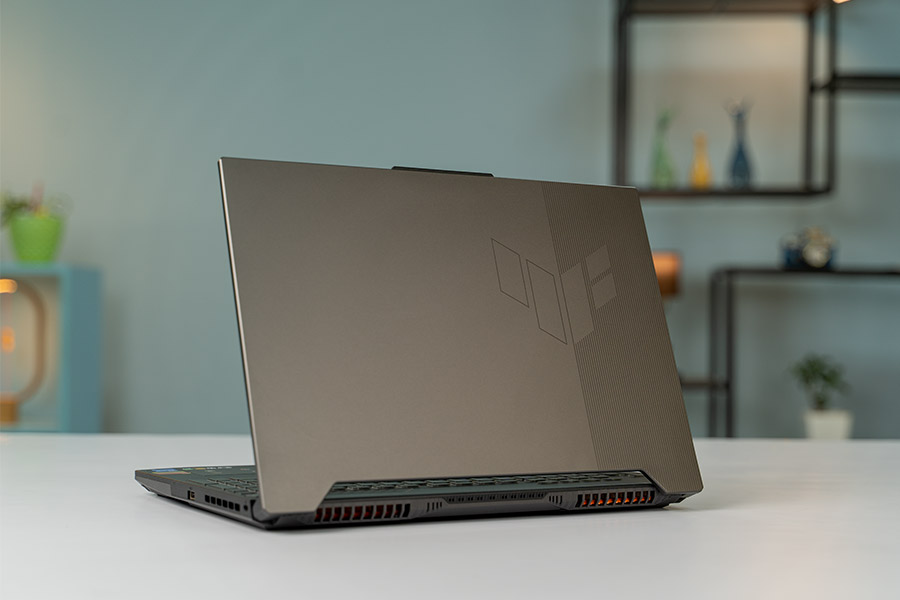
I have it in the “Jaeger Gray” finish, whereas it is also available in the “Mecha Gray” variant with an embossed TUF logo on the lid. In spite of all the internal upgrades, Asus says it has managed to minimize the chassis volume by 4.5% this time. And it is 100 grams lighter than its predecessor as well.
Its lid feels like it has a faux-aluminum finish, but the rest of the chassis is all plastic. Then again, great performance mixed with a plastic build is about as good as it gets in the mid-range segment. So unless the laptop isn’t sturdy or something, I don’t mind.
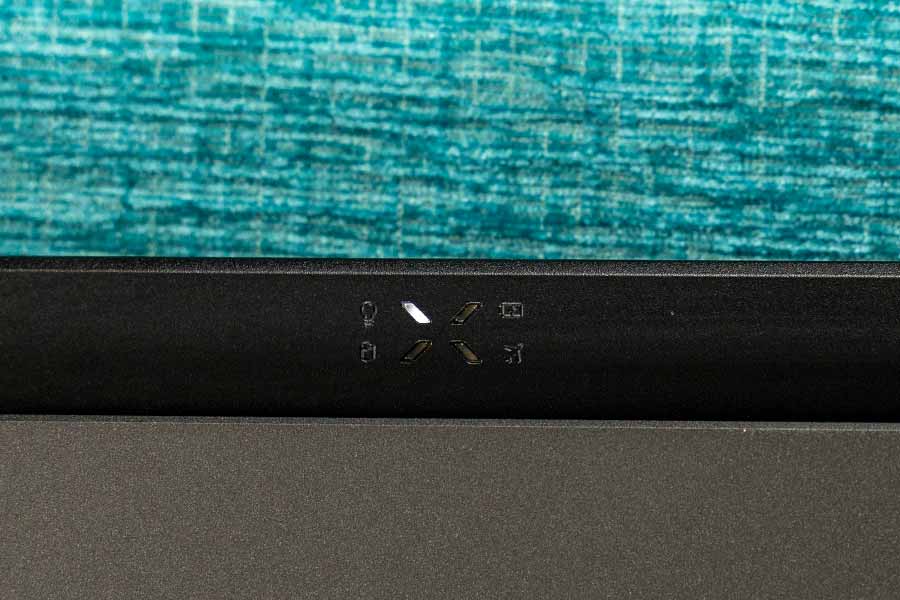
And since this is a TUF series laptop, to begin with, it doesn’t disappoint in the durability department. Besides the military-grade toughness, its hinge, lid, and keyboard deck are all solid. The soft matte finish on the keyboard deck that doesn’t attract fingerprints as much is a nice touch too.
Decent port selection
Above it, we can also see a funky X-shaped set of LED indicators, which are visible even with the lids closed. The connectivity side of things is also pretty decent. There’s a Kensington lock and a single USB 3.2 Gen 1 Type-A port on the right.
Review Images
1/2
Left
And on the left side, you get an additional USB 3.2 Gen 1 Type-A port alongside a 3.5mm headphone jack, a USB 3.2 Gen 2 Type-C, a Thunderbolt 4, an HDMI 2.0b, an RJ45, and a power connector. Both USB-C ports here support DisplayPort 1.4 as well, whereas the standard USB 3.2 Gen 2 port even lets you connect a G-SYNC compatible display that I talked about earlier.
Display
- 15.6" anti-glare non-touch FHD IPS panel
- 300Hz refresh rate, 100% sRGB gamut
- Adaptive-Sync, Optimus, MUX Switch
Talking about the display, the 2022 edition of TUF F15 also brings some neat upgrades here. Content creators can go for the 15.6” WQHD variant with 100% DCI-P3 gamut and a 165Hz refresh rate, while its entry-level model with a 144Hz refresh rate still has an underwhelming 62.5% sRGB coverage.

But unless you’re really tight on budget, I’d advise you to go with the 300Hz variant like ours, which is sort of a middle child between the two with its 100% sRGB panel. And on our unit, the default color calibration was almost on point too. Slightly reddish maybe, but perfectly serviceable.
Review Images
1/4
Color Gamut
Validating the company’s display claims, we found that this screen covers 98% sRGB and 74% P3 gamut. The color reproduction looks pleasing and the contrast level isn’t half bad either considering its IPS nature. The viewing angle is also quite nice, with a drop in saturation and brightness levels noticeable only when you’re looking at it from extreme angles.
The speakers could've been better
So whether you’re just going about your everyday work or streaming some show, it’s going to be a great experience. There is some mild backlight bleeding near the bottom right corner of the screen, but I can easily look past it.
If only its down-firing speakers were somewhat better, the binge-watching experience on the TUF F15 would’ve been terrific! Even when playing around with different equalizer presets in the Dolby Access app, I couldn’t settle for an enjoyable audio quality.
Anyway, I often noticed that this display looked noticeably worse on battery power. Be it in terms of brightness, colors, or contrast. And to solve this, all you gotta do is disable “Display Power Savings” under the Intel Graphics Command Center. Although this battery-saving feature could come in handy at times, I wish laptop makers (or Intel?) wouldn’t leave it on by default.
Bright enough display
TUF F15’s display can get plenty bright as well. I won’t say 344 nits peak brightness is enough for comfortable outdoor usage but if you can find a shade of some kind, this can be perfectly usable.
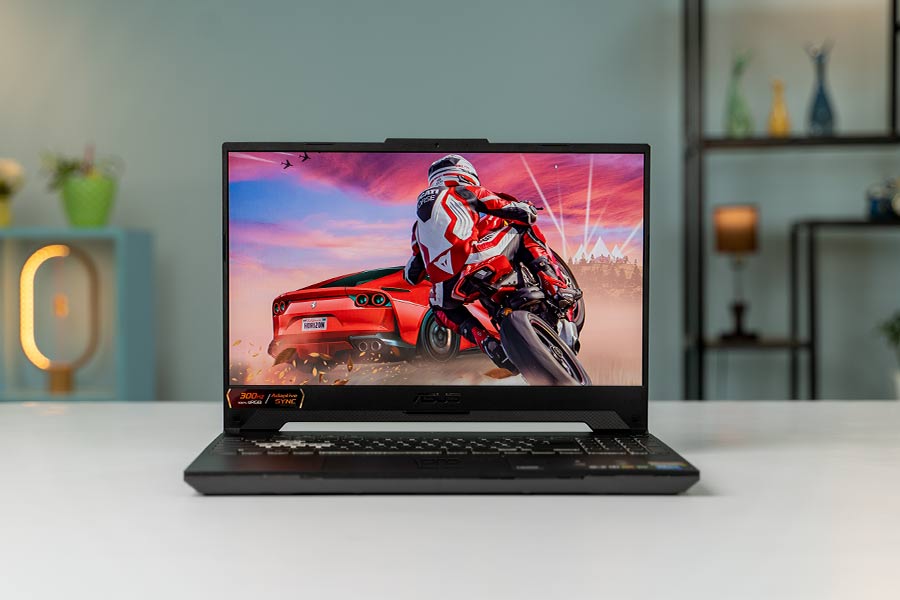
Not to forget, there’s also a layer of matte-coating here to prevent ambient light reflections from getting in your way. Apart from this, you can probably already tell that this 300Hz display has absolutely spoiled me with its smoothness. And its 3.1ms MPRT response time means you won’t have to deal with ghosting or any such issue when you’re playing some fast-paced games.
Keyboard
- Backlit full-size keys (with Numpad)
- 1.7mm travel, Single-zone RGB lighting
Moving on, Asus has used the same keyboard on the TUF F15 2022 as last year. You’re looking at a full-sized chiclet keyboard with a dedicated Numpad and everything. The WASD keys also get a special transparent flair, which sets them apart from the rest of the keys. Including a Numpad is nice and all but I wish Asus had found a way to retain full-sized keycaps for the arrow keys too.
But the actual typing experience on this keyboard is not that bad.
They have quiet and rather soft feedback which could be exactly what most people like—even though I prefer a bit less spongy keystrokes myself. The 1.7mm key travel distance is also perfect for me, and I was able to maintain my usual typing speeds without any trouble. And although it doesn’t support N-key rollover, I didn’t notice any ghosting issue here.
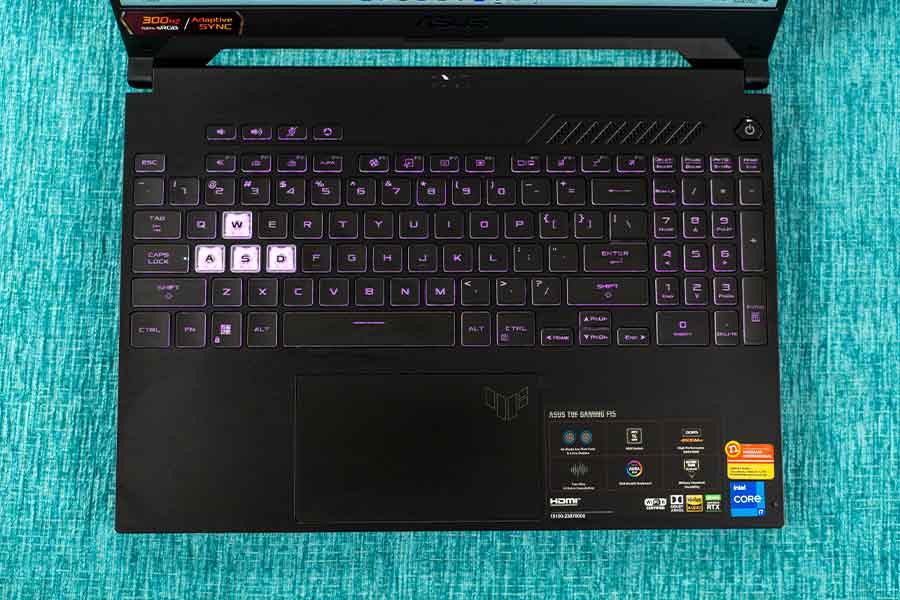
This is also a backlit keyboard with single-zone RGB that’s configurable via the aforementioned Armoury Crate app. Buuuuuut… its actual backlighting is so inconsistent and all the keys are properly well-lit either. I’ve also faced this issue with past TUF laptops, so seeing Asus continue to repeat the same mistake is a little disappointing.
Trackpad
- Plastic trackpad with integrated left/right keys
At least the trackpad’s seen an upgrade this time! It’s 26% larger and the separate left/right keys have been integrated into one as well. This is still a plastic-made trackpad so the gliding motion isn’t as smooth as it could be. And its clicking feedback is quite spongy too. But it handles all your multi-finger gestures and whatnot flawlessly, so there you go.
Webcam
- 720p HD camera, No privacy shutter
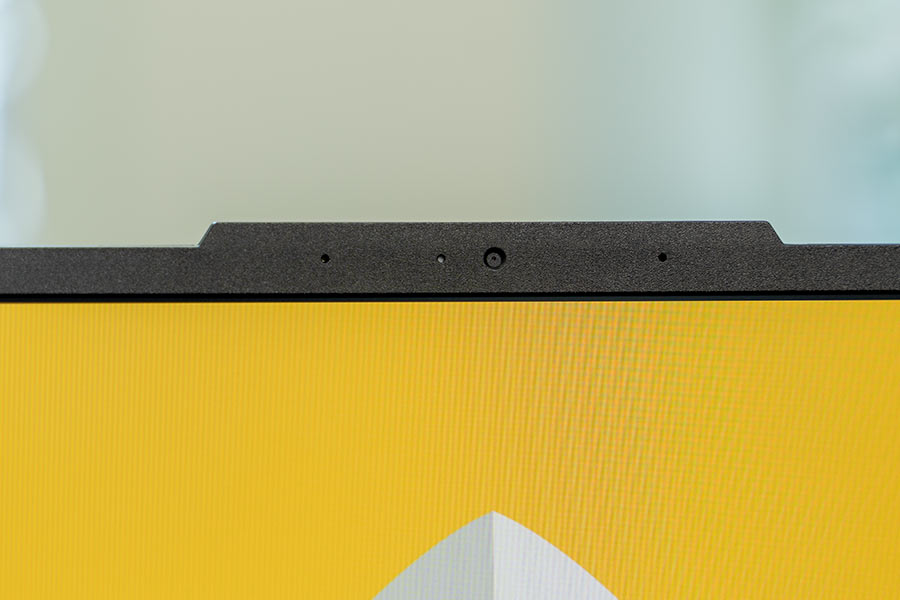
What’s next? Yes, a webcam. As expected, the TUF F15 has a standard 720p camera up top. Although it’s not extraordinary or anything, this is more than usable for attending casual video calls.
Battery
- 90 Watt-hour 4-cell battery
- 240W AC power adapter
Finally, let’s talk about its battery life. A 90 Whr battery sure sounds large, but because it's feeding such power-hungry processors, this guy managed just around 2 and a half hours of screen-on time under my regular usage consisting of web browsing together with editing word documents.
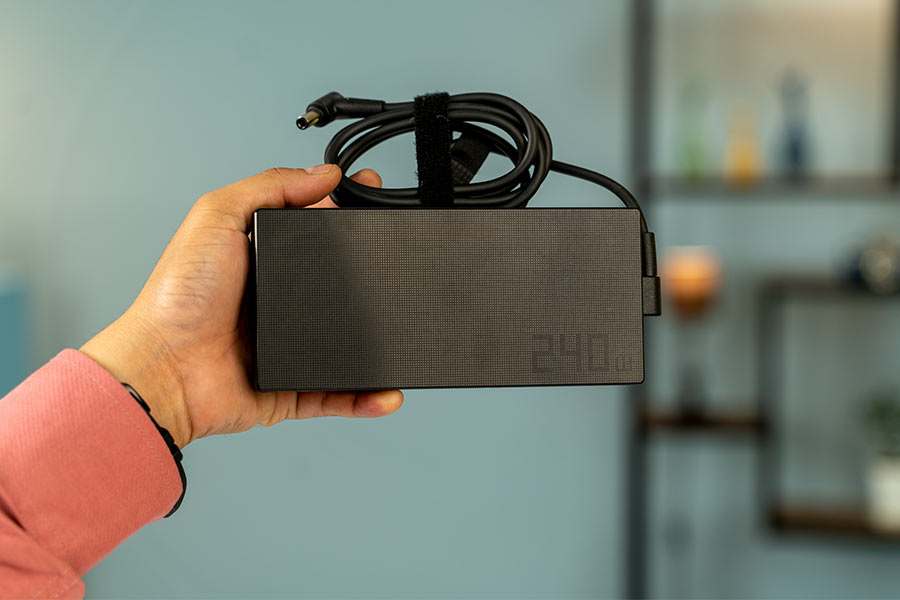
That was under Silent mode with Standard GPU profile turned on, whereas you can almost double the battery endurance by switching to Eco mode.
Asus TUF Gaming F15 (2022) Review: Conclusion
Okay, wrapping up this review, the 2022 edition of the Asus TUF Gaming F15 is a clear winner—oh, yes. The performance jump compared to 11th Gen CPU in its predecessor is huge, whereas Asus has gone the extra mile to include the highest TGP RTX 30 series GPU too.
But simply throwing in high-performance processors is just half the battle when it comes to delivering a great gaming experience. You also need a competent thermal system that can keep the temperature in check and a display that’s able to keep up. Thankfully, the F15 has got it all covered!
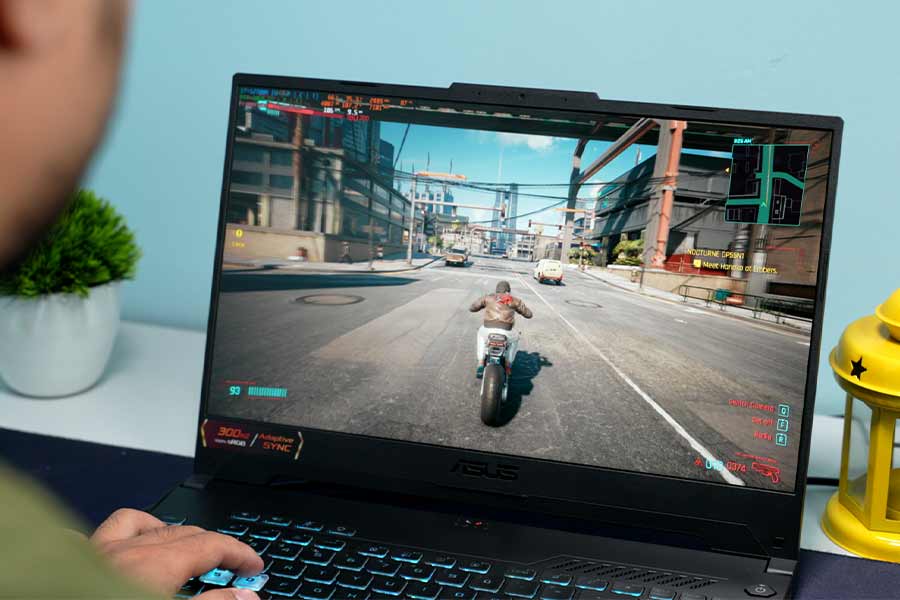
Once again, I wish its base model had a 100% sRGB color gamut too, but I guess that’s too much to ask for in the mid-range segment. So if you’re a gamer or even a content creator looking to buy a new laptop at this price range, I feel confident recommending the TUF F15 to you.
I tried but I really can’t find any major, deal-breaking flaw here. I can obviously nitpick about a few things like the underwhelming speakers, uneven keyboard backlighting, and a couple of other stuff. But let’s get real here—all those things can easily be overlooked for such an awesome laptop overall.
- Watch our video review of the Asus TUF Gaming F15 (2022)
- Terrific 1080p gaming performance
- Decent cooling system
- Nice I/O options
- Smooth 300Hz display
- 1.7mm RGB backlit keyboard
- Battery life is not too bad
- The design could be a bit subtle
- The display isn't G-SYNC compatible
- Disappointing speakers
- Inconsistent keyboard backlighting
- Trackpad feels a bit squishy

To say something about myself, I have been writing tech and gadgets from 2021. Although coming from a non technical studies background, I'm someone who is always fascinated by the latest gadget and tech innovations, circling around. Besides writing, you'll find me listening music and aligning the stars through astrology and sometimes even, tarot cards! 😉🧿
Comments
No comments yet. Add a comment to start a discussion























































